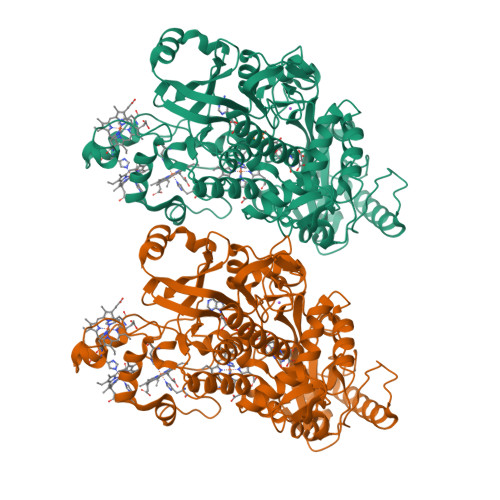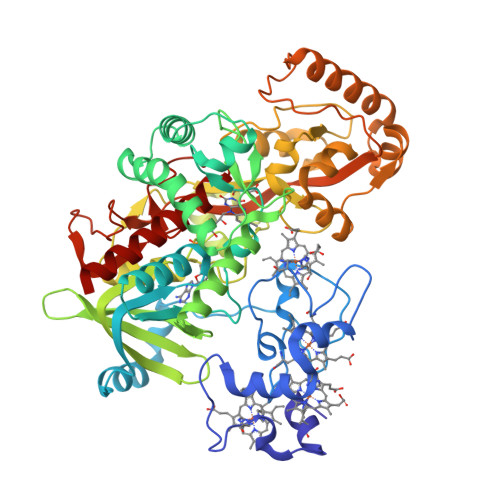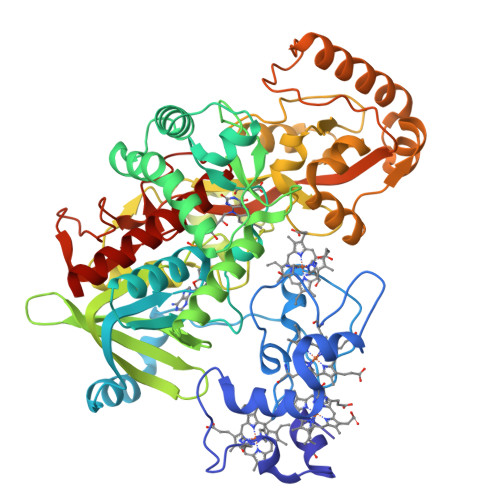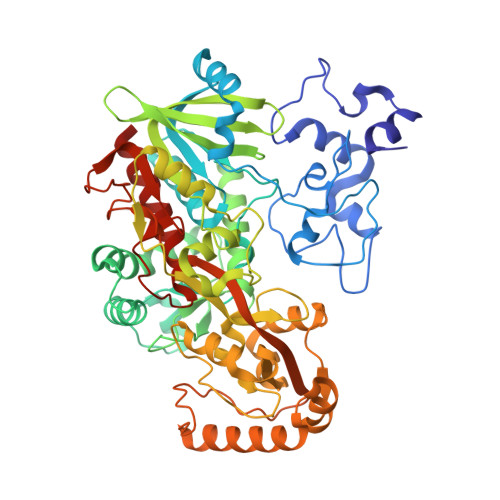Engineering water to act as an active site acid catalyst in a soluble fumarate reductase
Mowat, C.G., Pankhurst, K.L., Miles, C.S., Leys, D., Walkinshaw, M.D., Reid, G.A., Chapman, S.K.(2002) Biochemistry 41: 11990-11996
- PubMed: 12356299
- DOI: https://doi.org/10.1021/bi0203177
- Primary Citation of Related Structures:
1LJ1, 1M64 - PubMed Abstract:
The ability of an arginine residue to function as the active site acid catalyst in the fumarate reductase family of enzymes is now well-established. Recently, a dual role for the arginine during fumarate reduction has been proposed [Mowat, C. G., Moysey, R., Miles, C. S., Leys, D., Doherty, M. K., Taylor, P., Walkinshaw, M. D., Reid, G. A., and Chapman, S. K. (2001) Biochemistry 40, 12292-12298] in which it acts both as a Lewis acid in transition-state stabilization and as a Brønsted acid in proton delivery. This proposal has led to the prediction that, if appropriately positioned, a water molecule would be capable of functioning as the active site Brønsted acid. In this paper, we describe the construction and kinetic and crystallographic analysis of the Q363F single mutant and Q363F/R402A double mutant forms of flavocytochrome c(3), the soluble fumarate reductase from Shewanella frigidimarina. Although replacement of the active site acid, Arg402, with alanine has been shown to eliminate fumarate reductase activity, this phenomenon is partially reversed by the additional substitution of Gln363 with phenylalanine. This Gln --> Phe substitution in the inactive R402A mutant enzyme was designed to "push" a water molecule close enough to the substrate C3 atom to allow it to act as a Brønsted acid. The 2.0 A resolution crystal structure of the Q363F/R402A mutant enzyme does indeed reveal the introduction of a water molecule at the correct position in the active site to allow it to act as the catalytic proton donor. The 1.8 A resolution crystal structure of the Q363F mutant enzyme shows a water molecule similarly positioned, which can account for its measured fumarate reductase activity. However, in this mutant enzyme Michaelis complex formation is impaired due to significant and unpredicted structural changes at the active site.
Organizational Affiliation:
Department of Chemistry, University of Edinburgh, West Mains Road, Edinburgh EH9 3JJ, Scotland, U.K.























